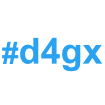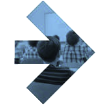Got strengths?
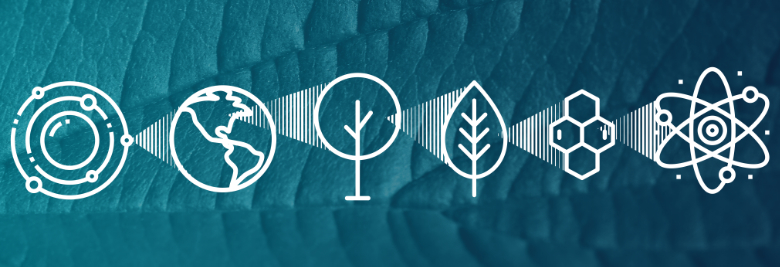
A Taxonomy of Talent to Drive Engagment
How engaged do you feel at work these days? Maybe you’re one of those lucky souls who is in a constant state of flow. If you’re more like us mere mortals, though, you might be hoping to make some tweaks to your experience. In this month’s "On our minds", we take a look at two unique metrics for helping you measure and improve engagement, for yourself and your team.
On our minds
‘Productivity’ is a legacy of the assembly line. Its central question is, "How many pieces of work is a person completing per unit of time?" In the knowledge economy, this sort of metric doesn’t tell us very much. Should we evaluate performance based on number of emails sent or decisions per meeting? Engagement is the new standard. It asks, “How invested is this person in our shared success?”
We’re still buzzing from our trip to Omaha for Gallup’s CliftonStrengths Summit last month. On top of the great conversations we had with folks who are passionate about improving workplace performance, it provided us with a chance to reflect on how workplaces can draw out (or inhibit) the strengths of each member of a team.
Research on employee engagement and workplace performance speaks to PLASTARC’s raison d’etre; social factors have tangible business impacts, can be measured, and can be changed. The interactions between people and workplaces are complex. If we want to maximize performance through metrics, we could think of each organization across four levels. A taxonomy of the needs and expectations of each offer a robust guide to engagement.
Business entity
Where does the business fit in the wider world? How does it engage with surrounding culture and society? How is this expressed?
Employee population
What kind of environment has leadership created? Are people getting the tools they need to succeed? Is there a positive, reciprocal commitment to business and people performance?
Team members
How does each person on a team fill a vital role? How does the team relate to the other parts of the organization? How do they communicate strengths?
Individual
What’s your relationship to your job—or to work in general? Is it providing what you want? Are you able to leverage your greatest strengths each day?
For years, tools like Gallup’s Q12 survey have helped employers understand how people experience their workplace. This top-down perspective is useful and necessary, but does not tell the whole story. Thankfully, tools like StrengthsFinder have emerged to fill in the gaps by focusing on the needs of individuals and teams.
Instead of looking at the weaknesses that a person might have, StrengthsFinder helps individuals to identify the things they naturally do well—a bit like a 21st-century workplace-oriented Myers-Briggs—and to communicate around those strengths. A team can benefit from knowing what each member brings to the table, irrespective of their actual job role. For instance, one of your team members might be really great at building relationships over time, while another is adept at cutting through distractions to focus on a long-term objective. This shared knowledge can help leaders to allocate the right people to the right tasks. It can only emerge from a process of individual self-discovery.
If that seems too touchy-feely, please reconsider; there is a strong correlation between employee engagement and business performance. According to Gallup’s Q12 meta-analysis, business units with the highest levels of employee engagement performed substantially better than their low-engagement counterparts on metrics from safety incidents (-48%) to turnover (-65%).
This shift in focus, to personalizing the work experience, is sorely needed. Less than a third of employees say they are engaged. Nearly a fifth are "actively disengaged", which can manifest as workplace hostility or disruption. The remaining half are simply “not engaged”, so they’re not giving employers their all.
They probably have some reasons for that ambivalence. Workplaces have not been uniformly great at creating the conditions needed for engagement. A decade after the financial crisis, many workers are still digging themselves out from it, and may have questions about an employer’s commitment to their future.
We can take steps in the right direction by equipping people to take command of their own engagement. When a company helps people declare what they’re awesome at and what they love doing, engagement can naturally follow. When people know what those around them are good at, they become more than the sum of their parts; they become a real team.
Satisfaction metrics are also directly impacted by the way we design and organize our workplaces. Thoughtfully-allocated spaces can foster relationships and community. Carefully-chosen amenities can eliminate distractions and encourage wellness. An organization looking to improve its performance and profitability can use this data to design a workplace experience that puts the user first.
As businesses shift toward a more people-focused approach, it’s apparent that prioritizing the needs of employees will pay off in the long run. Managers now have a stronger foundation on which to build an engagement strategy that delivers bottom line results. With an increasing range of products and services to help understand both the employer/employee relationship and the human operating system, now is an exciting time. We look forward to continuing to help our clients leverage the best resources to make work a better place.
From the archives
It’s hard to believe it’s been a year since West Elm Workspace published the white paper "Unoffice the Office". West Elm used PLASTARC’s social science research to expand their approach to office furniture design, prioritizing engagement and satisfaction.
Also from 2017, relive the debut of Alley Powered by Verizon. PLASTARC was engaged by Verizon to advise them on their global expansion of coworking practices in Verizon’s spaces. Savvy readers will remember that we continued this collaboration to open another space in Singapore this June.
That’s all we have for this edition. If you want to talk about ways to build a strengths-driven workplace, our inbox is always open—or just take a moment to brag; what are you awesome at?
In Case You Missed It
It wasn’t all beaches and BBQ’s this summer. We've had plenty on our plate since you last heard from us.
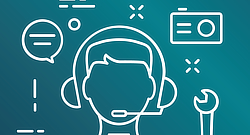
WinWin@Work Podcast
In this interview, PLASTARC Founder Melissa Marsh discussed how HR professionals can leverage the physical environment to enhance workplace performance.
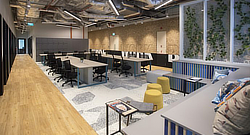
Verizon accelerates coworking
Work Design Magazine featured PLASTARC in this piece about Verizon’s efforts to integrate a coworking model into their global presence.

Knoxville News talks to Varis
PLASTARC team member Varis Nawatsikul was featured in this article about the role of immigrants in American businesses.

Why you should be reading this on a beach
It’s not too late to get a little summer sun! Revisit our August 2017 newsletter for some of the many reasons a little time off can serve you well any time of year.
Looking Ahead
As summer winds down, we’re excited to jump into an invigorating autumn. Here are a few of the places you’ll find us this fall.



